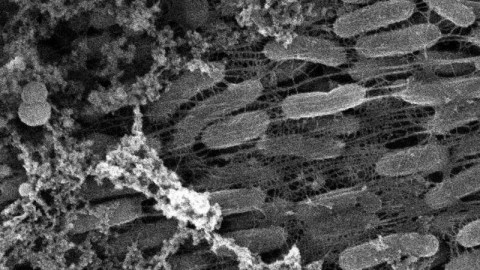Discovery of metal-breathing bacteria can change electronics

Credit: Rensselaer Polytechnic Institute
- Scientists discover Shewanella oneidensis bacterium can “breathe in” certain metals and compounds.
- The bacteria produces a material that can be used to transfer electrons.
- Applications of the finding range from medical devices to new generation of sensors.
Researchers discovered an unusual property of a bacteria that can “breathe” in some metal and sulfur compounds and create materials that can improve electronics, energy storage, and medical devices.
Specifically, the anaerobic Shewanella oneidensis bacterium can produce molybdenum disulfide, a material that can transfer electronics as well as graphene, explains the press release from Rensselaer Polytechnic Institute, whose team of engineers carried out the research.
Engineering professor Shayla Sawyer thinks their accomplishment “has some serious potential” once the scientists fully investigate the process involved and learn to control it.
One of the possible applications of this finding could be in developing a new generation of nutrient sensors to be used on lakes and other bodies of water to examine the health of their ecosystems. A bacterial biofilm, a collective of the microorganisms, could track excess nutrients in real-time, helping address harmful algae growth and other water issues.
Kate the Chemist: Water is a freak substance. Here’s why. | Big …
Postdoctorate researcher James Rees, who led the study, commented on the implications of their work:
“We find bacteria that are adapted to specific geochemical or biochemical environments can create, in some cases, very interesting and novel materials,” Rees shared. “We are trying to bring that into the electrical engineering world.”
What’s unusual about Shewanella oneidensis is that it can create nanowires for transferring electrons, a fact that “lends itself to connecting to electronic devices that have already been made,” Sawyer elaborated, calling it “the interface between the living world and the manmade world that is fascinating.”
Check out the new study, which also involved Yuri Gorby as the paper’s third author, in Biointerphases.





